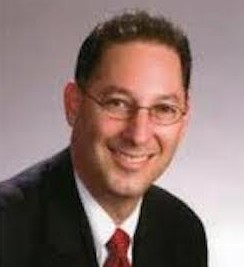Has there ever been a society where deluded individuals did not exist? – The answer is probably no. At one time or another, virtually every psychiatric hospital of decent size had their hands full with people who thought they were Jesus Christ or spies for either of two cold-warring intelligence agencies—CIA or KGB. Today, the mix is evolving. We now have quite a lot of individuals who think they are reality TV stars—the Kardashians in the psych wards so to speak. For these individuals, the whole package is present—directors, camera crews, and the audience. Except of course, the pros are out of sight.
Thing is, the phenomenon is not restricted to those who end in the psych wards. More people than you’d  realize exhibit the phenomenon, only not so dire that they need special psychiatric evaluation. Mild as it may appear; a public clinic psychiatrist in London estimated that one or two in every 10 patients he examined have had the sensation of being filmed. The phenomenon is commonly called the Truman Show Delusion and interestingly the population most affected is the young. The colloquial name for the phenomenon originates from a show of the same name—Truman Show directed by Peter Weir in 1998. In the movie, an insurance adjuster Jim Carrey found out that his entire life was an actual TV show.
realize exhibit the phenomenon, only not so dire that they need special psychiatric evaluation. Mild as it may appear; a public clinic psychiatrist in London estimated that one or two in every 10 patients he examined have had the sensation of being filmed. The phenomenon is commonly called the Truman Show Delusion and interestingly the population most affected is the young. The colloquial name for the phenomenon originates from a show of the same name—Truman Show directed by Peter Weir in 1998. In the movie, an insurance adjuster Jim Carrey found out that his entire life was an actual TV show.
In yesteryears when reality TV was but a wild imagination, such a case would have been outlandish, and incapable of producing mass contagion. However, in today’s world where surveillance is our new reality and everything we do or say is either photographed, videotaped, or recorded whenever we leave the confines of our private abode; it does begin to make sense why the Truman Show Delusion can actually have widespread contagion. Courtesy of the Edward Snowden leak, we know NSA is intercepting a huge barrage of our communications and storing them in some top-classified secret facility. We can only cringe with anxiety as the ‘smart home’ fiesta becomes mainstream. No less because the NSA, CIA, or some other unnamed agency will then have a bonanza of sorts for clandestine eavesdropping.
And although the show that exposed the phenomenon to limelight aired at the turn of the millennium, authors and movie producers had already dished out plenty of work based on the phenomenon, from as early as 1941 with the short story by Robert Heinlein, through the 50’s with the novel Time Out of Joint by Philip K. Dick in 1959. However, the link between the cultural environment and delusions is not superficial. The connection is much deeper. In fact, the cultural environment influences who gets psychosis, and why. The past, like parental loss or severe abuse during childhood can also significantly increase the risk of psychosis.
The list grows larger. Urban lifestyle with its accompanying high population density, growing income inequality, and increased immigration all also increase the risk of psychosis significantly. In the case of immigration, both immigrants and first-generation offspring are affected. And just when you think we’ve maxed out how weird the relationship between delusion and the social world can get, there’s another that trumps the others. Darker-skinned people who relocate to other countries experience high rates of psychosis, especially if they settle in regions that are not within ethnic enclaves.

